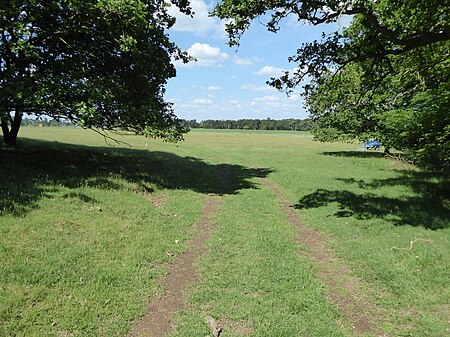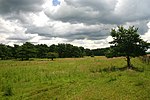Eriswell Low Warren
Nature Conservation Review sitesSites of Special Scientific Interest in Suffolk

Eriswell Low Warren is a 7.4 hectare biological Site of Special Scientific Interest north-east of Eriswell in Suffolk. It is a Nature Conservation Review site, Grade I, and part of the Breckland Special Protection Area under the European Union Directive on the Conservation of Wild Birds.The site is mainly unimproved acidic grassland on sandy soils, which has a variety of typical Breckland flora, and there are also areas of lichens and bryophytes. Rare plants include purple-stem cat's-tail, spring speedwell, Spanish catchfly and perennial knawel.The site is private land with no public access.
Excerpt from the Wikipedia article Eriswell Low Warren (License: CC BY-SA 3.0, Authors, Images).Eriswell Low Warren
West Suffolk
Geographical coordinates (GPS) Address Nearby Places Show on map
Geographical coordinates (GPS)
| Latitude | Longitude |
|---|---|
| N 52.384 ° | E 0.554 ° |
Address
Eriswell
West Suffolk
England, United Kingdom
Open on Google Maps











